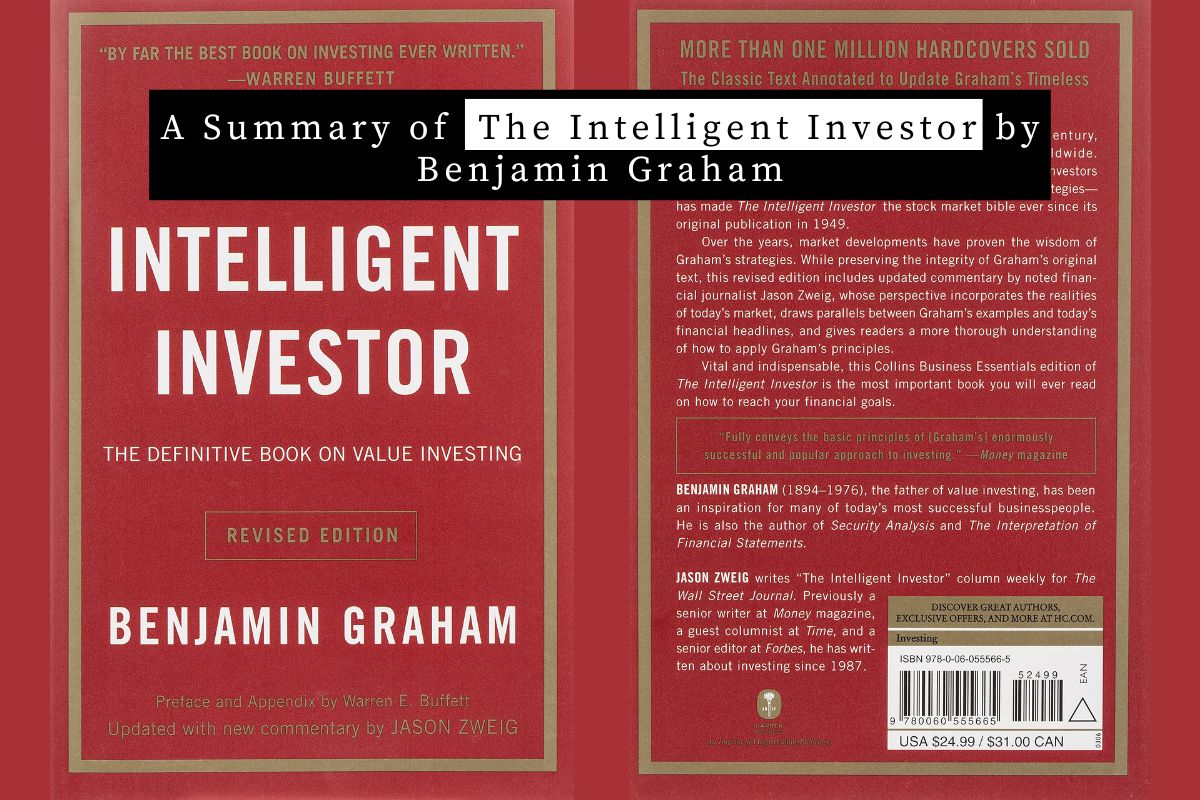Are you looking for ways to become a successful investor but don’t know where to start? If so, then you might want to consider taking some valuable insights from the book “The Intelligent Investor” by Benjamin Graham, one of the most successful investment gurus in the last century. In this article, we will discuss some of the most significant takeaways from the book that can help you develop a sound intellectual framework and make better investment decisions.
Table of Contents
ToggleMeet Mr. Market
Graham’s first core principle is to view a stock not as a ticker symbol combined with a price tag, but as an ownership interest in a business. Mr. Market, the metaphorical bipolar person in this context, can present fluctuating prices that can be pure gibberish. However, if you can keep your emotions in check, Mr. Market presents a great opportunity to make money. Invest only if you would feel comfortable holding the stock in the future without seeing the fluctuating prices that Mr. Market presents you with. For the investor who can keep his head cool, Mr. Market provides a great possibility of making money, as he presents you with an opportunity to do business with him. It is best to sell to him when he offers prices that are ridiculously high, and to buy from him when he presents you with bargains.
How to Invest as a Defensive Investor
Graham recommends that there are two types of investors: the defensive (or passive) one and the enterprising (or active) one. Most people are better suited for the defensive strategy, as the time they are willing to dedicate to investing is limited. The defensive investor should create a portfolio with a mixture of bonds and stocks, say 50% stocks and 50% bonds. Restore this allocation once or twice every year, so that if stocks suddenly make up 60% of the portfolio compared to only 40% in bonds, sell stocks and buy bonds, until 50/50 is restored.
Invest a fixed amount of capital at regular intervals, straight after you get your salary. This is called dollar-cost averaging and will allow for a fair average price of stocks and bonds. Most of all, it will assure that you don’t concentrate your buying at the wrong time. For the stock component of the portfolio, the defensive investor should aim for the following:
- Diversification in the companies he invests in. 10 to 30 companies should be adequate, and also make sure that you are not overexposed to a single industry.
- The companies should be large, which Graham defined as generating more than $100 million in yearly sales, which is approximately equivalent to $700 million in today’s value.
- Look for companies that are conservatively financed. Such a company has a current ratio of at least 2:1, which means that the company’s current assets are at least twice as much as their current liabilities.
How to Invest as an Enterprising Investor
An enterprising investor is an investor who has more time and resources to dedicate to investing. This investor should focus on seeking out undervalued stocks or bonds and not just following the market trend. This type of investor should conduct thorough research, including analyzing the financial statements and industry trends of a company before making an investment.
Margin of Safety
Graham’s margin of safety principle means that an investor should only invest when the market price of a stock is significantly lower than its intrinsic value. This ensures that if the market price of the stock declines, the investor will still have some cushion to fall back on. This principle helps investors to avoid overpaying for a stock, which can be detrimental in the long run.
Emotional Discipline
One of the most significant takeaways from the book is the importance of emotional discipline. Graham stresses the importance of keeping emotions such as fear and greed in check when making investment decisions. He argues that investors who are able to control their emotions and think rationally are more likely to make successful investment decisions in the long run.
Long-Term Focus
Graham advocates for a long-term approach to investing. He believes that investors should not be concerned with short-term market fluctuations but instead should focus on the long-term prospects of the companies they are investing in. Graham argues that a company’s intrinsic value is what ultimately determines its long-term success and that investors should focus on identifying undervalued companies with strong long-term growth potential.
Conclusion
In conclusion, “The Intelligent Investor” by Benjamin Graham is a must-read for anyone interested in investing. Graham’s principles are timeless and have been proven successful over many decades. Whether you are a defensive or enterprising investor, the book provides valuable insights that can help you develop a sound intellectual framework and make better investment decisions. By following Graham’s core principles of emotional discipline, long-term focus, and margin of safety, you can increase your chances of achieving successful investing outcomes.
Further Reading and Sources:
Intelligent Investor: The Definitive Book on Value Investing by Benjamin Graham
Intelligent Investor: The Definitive Book on Value Investing by Benjamin Graham
Berkshire Hathaway Letters to Shareholders 1965-2021
Additional Resources
To keep learning and advancing your career, we highly recommend these additional resources:
Top 5 Takeaways from the Essays of Warren Buffet
Warren Buffett’s Road to Success: How A Paperboy Became A Billionaire Investor
7 Financial Models Used by Investment Bankers












